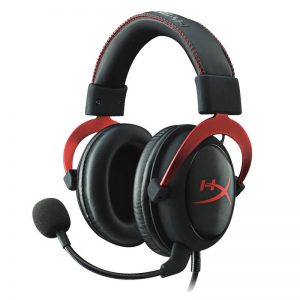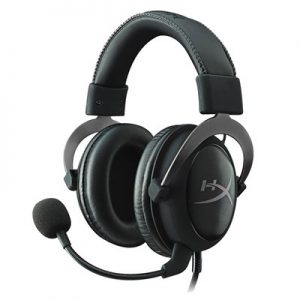One, the type of headset
The earphones produced by the earphone factory are classified according to their energy conversion methods, mainly including moving coil, electrostatic and isomagnetic. Separate from the structure, semi-open and closed. From the wearing form, there are earplug style, ear hanging style and headband style.
2. The difference between open and closed earphones
The shell of the open earphone is open, the open earphone is light in quality, the sound is natural, and there is no oppressive feeling. Because it is open, the sound leaks out, and the outside noise also enters.
Semi-open earphone means that the opening of the earphone is selective, that is, it is only open to certain frequencies and closed to other frequencies, or it is open in a certain direction and closed in other directions.
The shell of the closed earphone is closed to prevent outside sound from entering, and the sound leakage is reduced. It is used a lot in professional monitoring. The sound is generally very clear, rich in details, and low frequency response is very good. For most people, closed headphones have a sense of airtightness.
Three, what is a high-fidelity headset
The main performance of the International Electrotechnical Commission IEC581-10 standard high-fidelity headset is: the frequency response is not less than 50Hz to 12500Hz; the allowable error of the typical frequency response is ±3dB; the slope of the frequency response curve does not exceed 9dB per octave at 250Hz-800Hz The difference between the average sound pressure level of the left and right units in the same octave bandwidth is no more than 2dB. In the range of 100Hz-5000Hz, when the sound pressure level is 94dB, the harmonic distortion is no more than 1%, and the harmonic distortion is no more than 3% when it is 100dB; The frequency response is allowed to decrease between 2KHz-5KHz to improve transparency and sense of space.
Fourth, what is the frequency response range of headphones
The frequency response range refers to the width of the frequency band that the earphone can send. The frequency response width of an excellent earphone can reach 5Hz-40000Hz, while the hearing range of the human ear is only 20Hz-20000Hz. It is worth noting that the standards for defining the frequency response width are different. For example, the earphone factory uses less than 1/2 of the average output amplitude as the standard or less than 1/4 as the standard, which is obviously different. The general manufacturer measures the frequency response width with the output amplitude reduced by 1/2 as the standard, which means that the -3dB is the standard, but due to the different test standards used, some products are measured with -10dB. This is actually a standard measurement equal to 1/16 lower than the normal value. Therefore, the frequency response width is greatly expanded. When purchasing, users should note that the frequency response width of headphones of different brands may have different test standards.
Five, what is the impedance of headphones
The impedance of the earphone is the abbreviation of its AC impedance. Its size is that the DC impedance of the coil is above 200Ω. This is to match the earphone jack on a professional machine. On desktop computers or power amplifiers, VCDs, DVD TVs and other machines with headphone jack output, it is generally appropriate to use medium and high impedance headphones. If you use low-impedance earphones, you must first turn down the volume before plugging in the earphones, and then increase the volume a little bit to prevent the earphones from being overloaded and the earphones are burned out or the voice coil is deformed and misplaced, causing the sound to break. The impedance earphones are generally easier to push Therefore, portable and power-saving devices such as Walkman should choose low-impedance earphones. At the same time, attention should be paid to high sensitivity. Sensitivity index is more important for Walkman.
Six, what is the harmonic distortion of headphones
Harmonic distortion is a kind of waveform distortion, which is marked in the headphone index. The smaller the distortion, the better the sound quality.
Seven, what is the sensitivity of headphones
In layman’s terms, the sensitivity of the headset refers to the amount of power that needs to be input under the same conditions here. The higher the sensitivity, the smaller the input power required. For portable devices such as walkmans, sensitivity is an indicator worthy of attention. Of course, for desktop computers, this indicator is relatively less important.
8. The influence of the wire on the sound of the earphone
The influence of the wire on the sound of the headset is an indisputable fact. In the HI-FI system, different signal cables and speakers have obviously changed the characteristics of the sound. Of course, headphones are no exception. In recent years, several types of cables have been introduced abroad, which provides conditions for HD580 and 600 to change cables. Famous cables such as Clou in Sweden and Qadasi in the United States are waiting.
Nine, under what circumstances should the headset be equipped with an amplifier
There are three situations for ears with power amplifier. One is the audio source used. For example, there is no earphone dedicated output jack on the CD/DVD player. At this time, you can use a headphone amplifier to output from the audio line of the CD/DVD player (LINEOUT). Connect the two signal wires to the audio input jack of the power amplifier. The second situation is that low-sensitivity, high-impedance headphones, such as a Walkman, cannot be pushed with existing audio sources, so you must buy a headphone amplifier. The third situation is mid-to-high-end earphones. Using the existing earphone jack to launch this kind of earphones can’t realize the potential of earphones. Adding a earphone amplifier can further improve the sound quality. A high-quality headphone amplifier too.
10. How to buy an electronic transistor headphone amplifier
At present, the electronic tube headphone amplifiers on the market all use the cathode output device as the final amplifier. This type of circuit structure should be said to be very reasonable. Therefore, it is adopted by most headset factories. However, this circuit has a high output impedance and can only be equipped with headphones of 200 or 300 ohms or more, and the higher the impedance, the smaller the distortion.
The final stage of the power amplifier of the transistor earphone adopts the OTL circuit, which has no strict requirements on the impedance, and the lower the impedance, the greater the output current and the greater the power. Therefore, the transistor power amplifier takes all of high, medium and low impedance, but it is better to push low-impedance headphones.
11. The sound characteristics of headphones
You may be more familiar with eating than headphones, so let’s start with eating. Sichuan tastes spicy, Cantonese tastes light and fresh, Shanxi people like sour. Which of these three flavors taste best? I am afraid that different people have different opinions. The characteristics of headphones are the same. European earphones such as Bayer, Sennheiser, and AKG generally have similar sounds, real, clear, and light as water. American headphones such as Gauss, Alice, and Goethe make people feel passionate, humane, and energetic. Japanese headphones have oriental aesthetic characteristics, beautiful human voice, warm sound, good high and low frequency extension. Some people describe the sound as LS3/5a. What kind of music do you like, what headphones, are you a young or middle-aged person, and what kind of personality and hobbies are you? You decide for yourself. In terms of sound characteristics, only the characteristics of the above three types are different, and there is no difference between good and bad.








